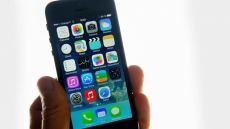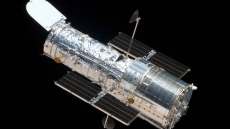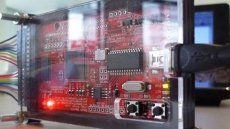Apple's new phones are bigger, faster, and promise more than ever before
At a special event in Cupertino, Apple debuted two new iPhones: the iPhone 6 and iPhone 6 Plus. Both phones will be in stores on Sept. 19, and pre-orders start Friday.
Topping the list of new features is a 4.7-inch display, larger than any previous iPhone model. The screen has a resolution of 1,134 x 750, for a pixel density of 289 ppi (pixels per inch). That's technically less sharp than what Apple has called "retina" quality, and not nearly as pixel-dense as some other flagship phones, such as the LG G3 (538 ppi). Apple calls the the new display "Retina HD."

A new chip powers the iPhone 6, the Apple A8 processor. The A8 is the successor the A7, which introduced 64-bit processing to iOS. The A8 is also 64-bit, but it's faster and more efficient, built with 20-nanometer tech. Apple says the chip is up to 50 times faster than the one in the original iPhone Apple says the chip is up to 50 times faster than the one in the original iPhone, with graphics up to 84x faster.

The iPhone 6 Plus shares the same internal specs as the iPhone 6, but with a higher resolution of 1920x1080, leading to a pixel-density of 401 ppi (pixels per inch). That might not be quite as high as the quad-HD resolutions we're seeing from the LG G3 and the Samsung Galaxy Note 4, but it's a record for Apple devices.
The iPhone 6 Plus comes with a 64-bit A8 processor with a brand new camera sensor.

Apple also announced its Apple Watch during its press event in San Francisco. And it looks… underwhelming. The watch face itself is square, mirroring the popular design of many existing smartwatches.
It comes with stainless steel, sapphire glass and a customized experience that is more suited to the smaller form factor.

What separates the device, Apple’s Tim Cook explained, is something called a “digital crown,” which is basically a dial. You use this crown to zoom in and out of apps, giving you control over the UI.

No pinching to zoom or anything like that—those gestures just wouldn’t work on such a small screen. There’s a home button on the side, with rounded edges and a number of bands to choose from.





